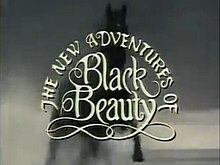Chapter 6: Liberty
byChapter 6: Liberty introduces a quiet longing within Black Beauty as he reflects on the limitations of his current life. Although his stable is clean, his food nourishing, and his handlers kind, he cannot help but yearn for the open pastures of his youth. The feeling of wind rushing past as he galloped freely, untethered and unburdened, remains vivid in his memory. Now, despite comfort, he feels constrained by straps, blinkers, and routines that restrict the joyful spontaneity of movement he once took for granted. This subtle ache for liberty reveals that even well-treated animals retain deep instincts for movement, exploration, and self-expression. It is not rebellion but a call from within—a natural response to confinement that no amount of gentleness can entirely suppress.
John, understanding this tension, meets Black Beauty’s needs with patience rather than force. He knows when restlessness strikes and allows for spirited outings to help release the pent-up energy. These trotting sessions through country lanes or along quiet roads aren’t just exercises; they are small gifts of freedom, moments when Black Beauty can stretch his legs and feel alive again. John’s intuition serves as a contrast to harsher handlers who might interpret energy as disobedience. Instead, he adjusts care to match temperament, earning trust and cooperation through attentiveness rather than coercion. This relationship, built on mutual respect, becomes a cornerstone of Black Beauty’s sense of security, even in a life that lacks true liberty.
The chapter skillfully explores a broader idea—the balance between structure and freedom in the lives of working animals. Horses like Black Beauty are expected to conform to a human-imposed routine, yet they remain creatures of nature, driven by instinct and emotion. The narrative gently challenges the reader to consider whether kindness alone is enough, or if the denial of natural behaviors constitutes its own kind of cruelty. Beauty’s calm acceptance of his role does not erase the quiet loss he feels, and this nuanced depiction draws attention to a deeper emotional landscape that exists beneath the surface of animal obedience. It invites empathy, asking readers to imagine confinement not as punishment, but as an everyday reality.
In many ways, the chapter also reflects on the social dynamics between caregivers and animals. John doesn’t just train—he listens, observes, and adapts. His success comes not from dominance but from understanding, creating a model of humane stewardship that stands out in contrast to other owners later in the book. This distinction is subtle but vital; it shows that effective care means more than physical health—it involves emotional sensitivity and respect for individuality. Black Beauty is not just a tool for labor; he is a being with memories, preferences, and a soul shaped by every interaction.
Through Black Beauty’s narrative, the chapter draws a quiet but persistent connection between liberty and identity. The sense of self in an animal, often ignored in utilitarian perspectives, is brought to the forefront. It emphasizes that just like humans, horses experience life as a series of physical and emotional realities, shaped by freedom, confinement, kindness, and routine. Even in a good home, Beauty feels the absence of choice, and it is this honesty that gives the chapter its power. The story does not vilify work or structure but asks whether empathy alone can make captivity feel less like a loss and more like a shared experience between two beings trying to coexist with dignity.
Ultimately, “Liberty” is not just about Black Beauty’s personal experience. It speaks to the quiet compromises made every day by animals in human care. Through vivid imagery and restrained emotion, the chapter encourages reflection on how freedom—whether full or fleeting—shapes well-being. And by presenting John as a human who bridges the gap between control and compassion, it offers hope that even within limits, understanding and kindness can preserve something of the wild spirit within.

